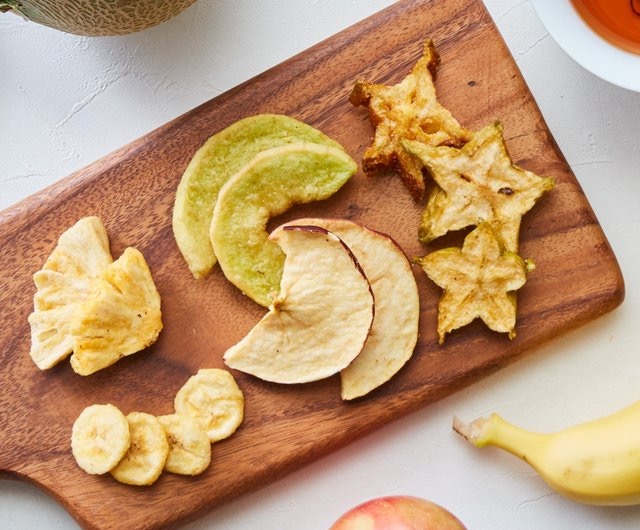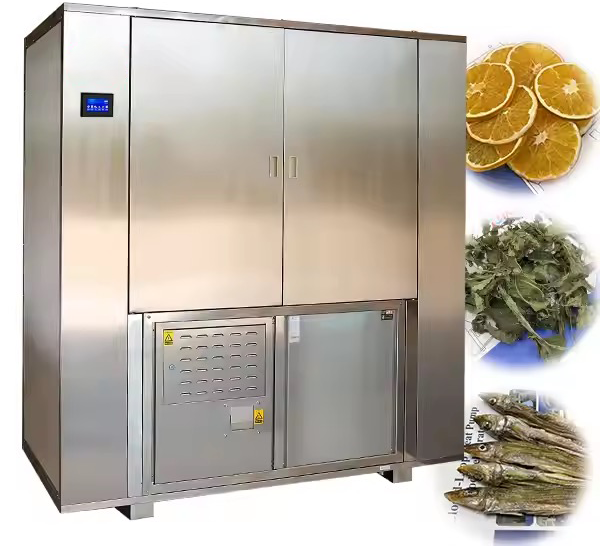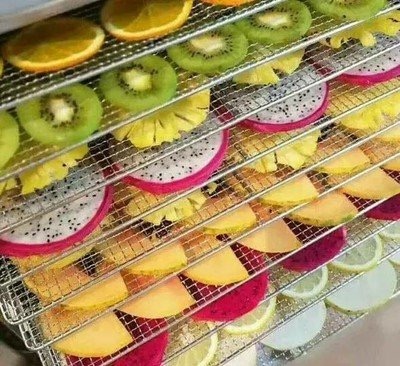
Content Menu
● Understanding Heat Pump Dryers
>> Benefits of Heat Pump Dryers
● Key Features to Consider
>> 1. Capacity and Size
>> 2. Energy Rating
>> 3. Control Systems
>> 4. Maintenance Requirements
>> 5. Construction Quality
● Additional Considerations
>> 6. Noise Levels
>> 7. Safety Features
>> 8. Warranty and Support
● How to Evaluate Different Models
● Installation Considerations
>> Space Planning
● Operational Best Practices
● Conclusion
● FAQ
>> 1. What is a heat pump dryer?
>> 2. How does a heat pump dryer work?
>> 3. What types of food can be dried using a heat pump dryer?
>> 4. Are heat pump dryers suitable for large-scale operations?
>> 5. What maintenance do heat pump dryers require?
● Citations:
In the food processing industry, selecting the right equipment is crucial for ensuring quality, efficiency, and cost-effectiveness. One of the most vital pieces of equipment for preserving food is the heat pump dryer. This article will guide you through the process of choosing the best heat pump dryer for your company, focusing on its benefits, features to consider, and how it can enhance your food drying operations.

Understanding Heat Pump Dryers
Heat pump dryers are advanced drying systems that use a heat exchange mechanism to dry food products efficiently. Unlike traditional dryers that expel hot air, heat pump dryers recycle heat, making them more energy-efficient and environmentally friendly.
Benefits of Heat Pump Dryers
- Energy Efficiency: Heat pump dryers consume significantly less energy than conventional drying methods. They can reduce energy usage by up to 50%, which translates into lower operational costs.
- Gentle Drying: These dryers operate at lower temperatures, which helps preserve the nutritional quality and flavor of food products. This is particularly important for sensitive items like fruits and herbs.
- Reduced Emissions: By recycling air, heat pump dryers minimize the release of hot, humid air into the environment, making them suitable for various settings without requiring extensive ventilation systems.
- Versatility: Many models offer multiple drying programs tailored to different types of food products, allowing for flexibility in production.
- Consistent Quality: Heat pump dryers provide uniform drying conditions, which helps maintain consistent quality across batches. This is essential for brands that prioritize product integrity.
Key Features to Consider
When selecting a heat pump dryer for your company, consider the following features:
1. Capacity and Size
The capacity of the dryer should align with your production needs. Heat pump dryers come in various sizes:
- Small (up to 50 kg)
- Medium (50-150 kg)
- Large (over 150 kg)
Assess your production volume to determine the appropriate size. It's also important to consider future growth; investing in a larger capacity dryer may be beneficial if you anticipate increased production demands.
2. Energy Rating
Look for models with high energy efficiency ratings (A+++ or similar). This ensures that you are investing in a machine that will save you money on energy bills over time. Additionally, many countries offer incentives for using energy-efficient equipment, which can further offset costs.
3. Control Systems
Advanced control systems allow for precise temperature and humidity management. Features like programmable settings and real-time monitoring can enhance operational efficiency. Some models may even include remote access capabilities, allowing operators to monitor and adjust settings from anywhere.
4. Maintenance Requirements
Choose a model with easy maintenance features. Regular cleaning of filters and heat exchangers is essential to maintain efficiency and prolong the lifespan of the dryer. Look for designs that allow easy access to components that require routine maintenance.
5. Construction Quality
Durable materials and robust construction are critical for long-term use in industrial settings. Look for stainless steel components that resist corrosion and wear. Additionally, consider models designed to withstand harsh environments typical in food processing facilities.

Additional Considerations
6. Noise Levels
Noise can be a significant factor in choosing equipment, especially if your facility has strict noise regulations or if it operates near residential areas. Look for heat pump dryers designed with sound-dampening technology to minimize operational noise.
7. Safety Features
Safety should always be a priority in any manufacturing environment. Ensure that the heat pump dryer includes safety features such as automatic shut-off mechanisms, temperature sensors, and emergency stop buttons.
8. Warranty and Support
A good warranty can provide peace of mind when investing in new equipment. Look for manufacturers that offer comprehensive warranties on their products along with reliable customer support services.
How to Evaluate Different Models
To select the best heat pump dryer for your company, evaluate different models based on:
- Performance Reviews: Research user experiences and performance ratings from other food processing companies.
- Cost Analysis: Compare upfront costs with long-term savings on energy bills.
- Manufacturer Support: Consider brands that offer reliable customer service and warranty options.
- Technology Integration: Some modern heat pump dryers come equipped with IoT capabilities that allow for better tracking of performance metrics and predictive maintenance alerts.
Installation Considerations
Proper installation is critical for optimal performance. Ensure that your facility can accommodate the required space and utilities for the dryer. Professional installation may be necessary to ensure compliance with safety standards.
Space Planning
Before purchasing a heat pump dryer, conduct a thorough assessment of your facility's layout to determine where the machine will fit best without disrupting existing workflows. Consider factors such as:
- Access to power sources
- Proximity to other equipment
- Adequate ventilation
- Workflow efficiency
Operational Best Practices
Once you have selected and installed your heat pump dryer, implementing best practices will help maximize its performance:
- Regular Training: Ensure staff are trained on operating procedures and maintenance requirements to prevent misuse or neglect.
- Routine Checks: Schedule regular inspections of the dryer's components to identify any potential issues before they escalate into costly repairs.
- Data Monitoring: Utilize any available data monitoring features to track performance metrics over time, allowing you to make informed decisions regarding operations and maintenance schedules.
Conclusion
Choosing the best heat pump dryer involves careful consideration of capacity, energy efficiency, control systems, maintenance needs, construction quality, and additional features such as noise levels and safety mechanisms. By investing in a high-quality heat pump dryer tailored to your company's specific needs, you can enhance your food drying processes while benefiting from reduced operational costs and improved product quality.

FAQ
1. What is a heat pump dryer?
A heat pump dryer is an energy-efficient drying system that uses a heat exchange mechanism to recycle air during the drying process, resulting in lower energy consumption compared to traditional dryers.
2. How does a heat pump dryer work?
Heat pump dryers work by extracting moisture from food products using low-temperature air circulation while recycling heat within the system to maintain efficiency.
3. What types of food can be dried using a heat pump dryer?
Heat pump dryers are versatile and can be used to dry various food items, including fruits, vegetables, herbs, meats, and even grains.
4. Are heat pump dryers suitable for large-scale operations?
Yes, many models are designed specifically for industrial use and can handle large volumes of food products efficiently.
5. What maintenance do heat pump dryers require?
Regular maintenance includes cleaning filters and heat exchangers to ensure optimal performance and longevity of the equipment.
Citations:
[1] https://www.rdo.co.uk/blogs/products/the-ultimate-guide-to-heat-pump-tumble-dryers-are-they-worth-it
[2] https://knees.co.uk/help-and-advice/buyers-guides/choosing-the-best-heat-pump-tumble-dryer/
[3] https://www.fusespecialtyappliances.com/blog/heat-pump-dryers-explained
[4] https://www.ike.cn/video
[5] https://www.youtube.com/watch?v=mtDzdYoyeR8
[6] https://www.dreamstime.com/photos-images/food-dehydrator.html
[7] https://undecidedmf.com/are-heat-pump-dryers-really-worth-it-miele-dryer-review/
[8] https://appliancentre.com/bestbuys/heat-pump-tumble-dryers
[9] https://www.youtube.com/watch?v=rR2G5UO-5Ms
[10] https://www.freepik.com/free-photos-vectors/food-dehydrator











